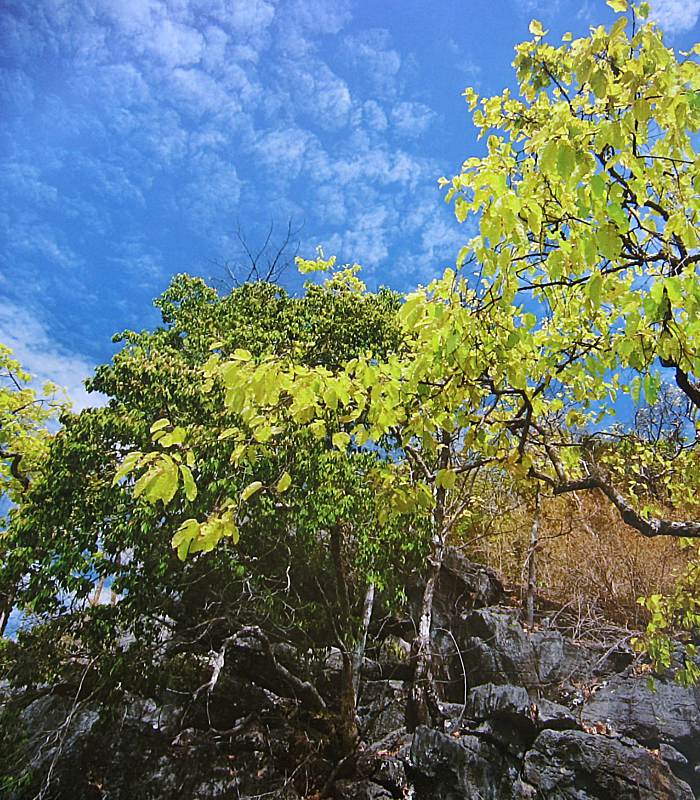Limestone Flora

- Among the most striking plant species in the area is the limestone cycad (Cycas clivicola), an ancient gymnosperm which found its niche in the crevices of the limestone hills.
In the area of Kilim-Kisap, the oldest limestones in Malaysia belongs to the Setul Formation. This formation stretches from Tanjung Rhu in the north to Pulau Dayang Bunting in the south. The limestones hills and outcrops form what appear to be almost vertical and rugged karstic landscape with sharp pinnacles of various shapes and sizes are among the most breathtaking and beautiful sceneries in Langkawi.
The oldest limestones also form the substratum of the vast mangrove swamp forests flanking both the River Kisap and River Kilim and their tributaries. In Malaysia, this is the only area where mangrove forests are founded directly on limestone substratum, elsewhere in the country they are formed on muddy or sandy alluvium.
Among the most striking plant species in the area is the limestone cycad (Cycas Clivicola), an ancient gymnosperm which found its niche in the crevices of the limestone hills. Some of them grow almost on the vertical surfaces of the hills with their stems and crown dangling into the open, and their roots anchored in the shallow crevices. It is one of the most beautiful cycads and has a great potential in ornamental plant industry.
The gouty balsams (Impatiens mirabilis) a somewhat small and succulent herb with showy yellow flowers are also found here. Many other species, such as Bouea macrophylla, Boues oppositifolia, Euphorbia antiquorum, Morinda calciphila and many others, are found growing on the shallow beds of limestone deposits.
What constitutes the most interesting habitat in the area is the ecotone produced at the boundary between the vertical limestone faces of the hills and the mangrove forests. It is worth thinking what type of evolutionary adaptations would the flora and fauna inhabiting the ecotone have adapted to survive. This requires a detailed ecological investigations to understand the effects of inter-tidal fluctuations and nutrient fluxes in the area.
